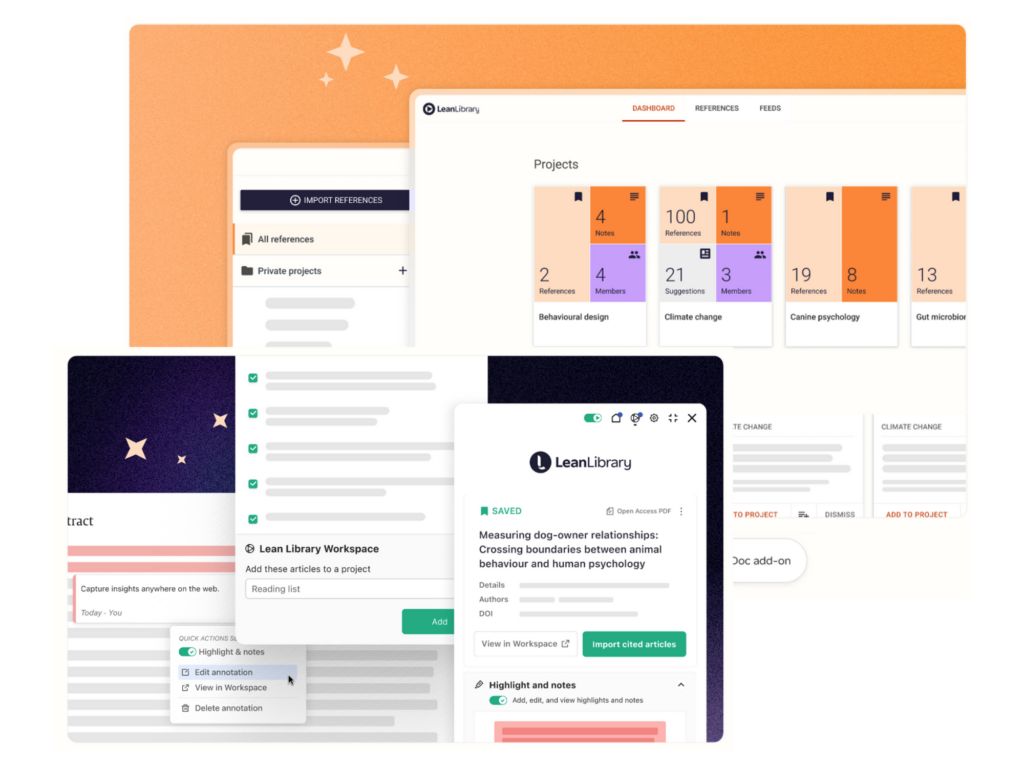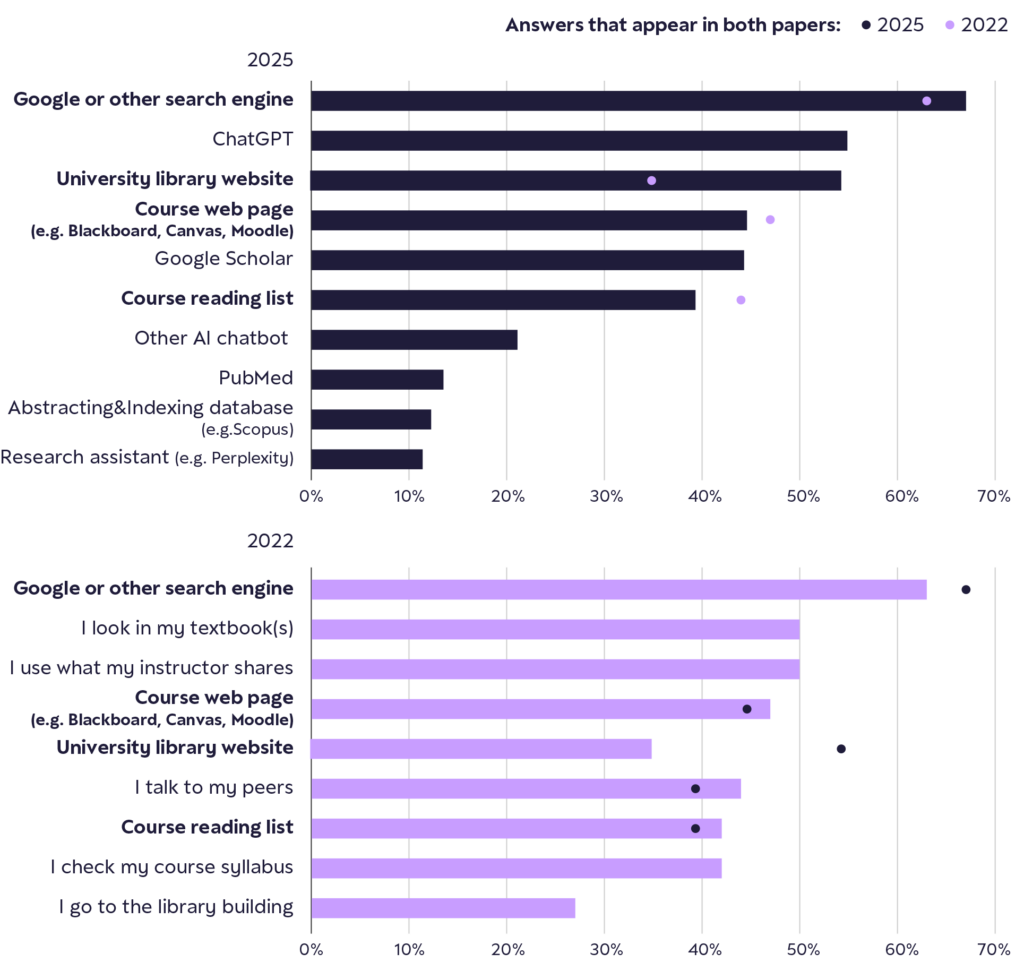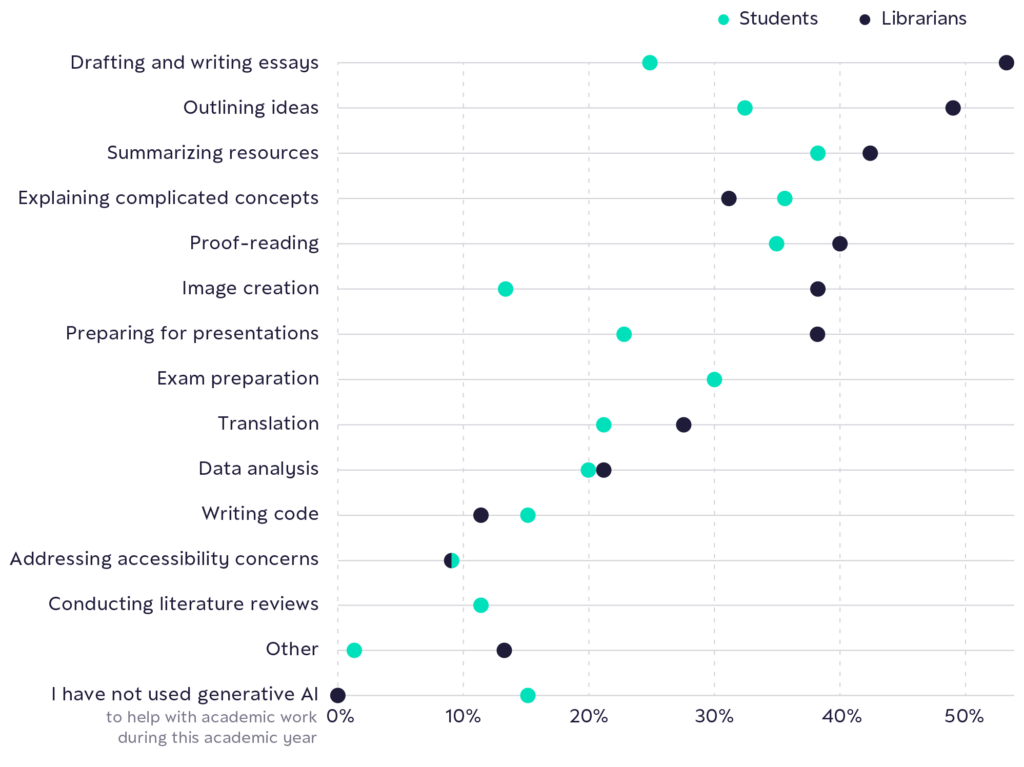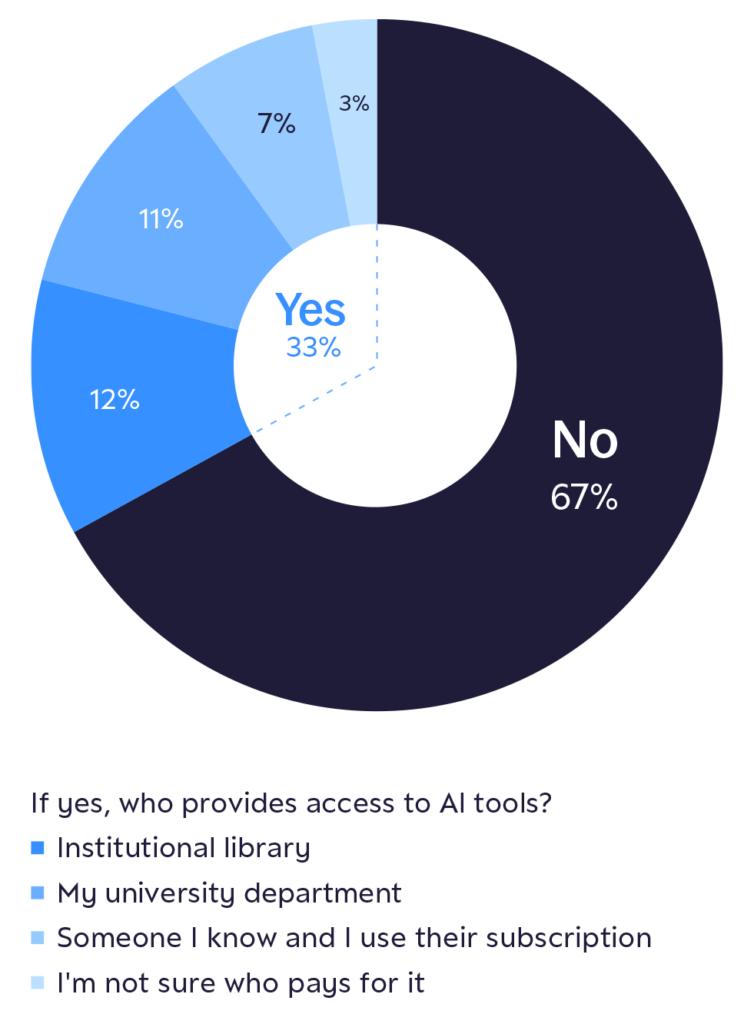Academic libraries play a crucial role in providing students and researchers with access to both digital and physical books and other collections. While digital resources offer convenience and easy access, physical books remain an essential part of the student and research experience, ensuring permanence, mitigating screen fatigue, and addressing access inequities, ensuring accessibility for all users.
Our Lean Library product originally focused on connecting users with the library’s digital collections when they search online on sites like Google Scholar. We’re pleased to share that Lean Library has now introduced Print Alternatives to also connect users with the library’s physical, print resources when they search on the open web.
Print Alternatives is a new enhancement to Lean Library’s existing Alternatives feature that seamlessly surfaces the library’s print book availability when users search for books online. When a user is browsing for books online (whether on Amazon, Waterstones, or any book seller site) and an ISBN is detected, the Lean Library browser extension will now alert users to whether a physical copy of the book is available in the library’s collection instead. This ensures that users are aware of all available formats—digital and print—at their point of need.

Print Alternatives functions as part of Lean Library’s existing Alternatives flow, which links users to alternative ways to access content they are searching for online, whether:
When a print book is identified, the extension provides a “Find copy” button that pre-generates a search in the library’s catalogue, directing patrons to locate the print title. This feature increases the visibility and circulation of physical collections while offering students and researchers greater flexibility in accessing materials.
Print Alternatives works with the major library discovery system providers, including:
For institutions using other discovery systems, the original Print Book functionality, which included a “Check for print” button, remains available, allowing patrons to navigate to their library’s website for print book searches.
In an increasingly digital world, print books continue to provide unique value. They offer a break from screen fatigue, ensure longevity, and support equity by providing access to students who may not have reliable digital access. By integrating Print Alternatives into Lean Library, we’re helping institutions maximize the impact of their print collections alongside digital offerings.
For more insights into the importance of print, explore our blog post.
With Print Alternatives, Lean Library can make the library’s print collections as accessible as digital resources, ultimately increasing engagement, improving resource usage, and supporting a diverse range of learning preferences.
Discover how Print Alternatives can amplify your library’s impact today by requesting a demo.
Congratulations to our June Library of the Month, Concordia University Irvine! June 19, 2025Each month we select a Library of the Month to honor libraries who have been using our library technologies in interesting and innovative ways, driving usage of library content with Lean Library.
The winning library will be awarded a prize to share amongst their team or a donation to a charity of their choice as a way for us to say thank you.
Concordia University Irvine (CUI) is a private, nonprofit Christian university located in Irvine, California, United States. They educate nearly 5,000 students on campus and online, and their alumni network has grown to over 25,000 worldwide.
We chose CUI as June’s Library of the Month as one of the first institutions to turn on our newly launched Lean Library Workspace feature to support its students across the entire research journey – from content discovery and access through to reference management, project collaboration and authoring work.

We asked Regina Powers, Library Director at CUI to tell us more about the university library and Lean Library:
“In fall of 2024, we set up Lean Library as a fresh way to connect learners to content. Concordia students appreciated the flexibility of being able to conduct research outside of the library’s search box. We have only just begun demonstrating the functionality of the new all-in-one Lean Library Workspace. But already students, especially graduate students, are excited about how much time they will save using Workspace to find, organize, annotate, and cite their research and include it in their writing projects. We plan to introduce Lean Library Workspace to faculty as a potential formative assessment tool. When added to a student’s Workspace project, faculty will be able to view and/or collaborate on their students’ research progress. (There will be no need to wonder if AI has done the work. Instructors will be able to view the student-selected articles linked up to their Workspace project.)
Concordia University Irvine is honored to be recognized as Library of the Month. We are beyond grateful to be partnering with Technology from Sage now and into the future.”
Discover our previous winners below:
Could your library be next?
Join us next month to see who’s won.
Lean Library Case Study: Higher Colleges of Technology June 18, 2025
Higher Colleges of Technology (HCT) is the UAE’s largest applied higher education institution, renowned for its leadership in applied and technological education. The university faced a common challenge across university libraries: ensuring seamless access to their extensive library resources across diverse online platforms. With students and faculty increasingly conducting research online, HCT needed a solution that brought library content directly to users wherever they were working.
HCT chose Lean Library to promote library resources throughout the research workflow to students via the Lean Library browser extension. This streamlines student access to library holdings and Open Access content and takes library services and guidance to students at their point of need.

After implementing Lean Library, HCT experienced a significant transformation in how their academic community accessed and engaged with library resources. Lean Library’s browser extension acts as a direct bridge between users and the library’s digital holdings, surfacing content and support exactly when and where it’s needed, whether the student begins their research on Google Scholar, PubMed, Wikipedia, or even ChatGPT.
“Lean Library has completely streamlined our users’ research workflows. Our students no longer waste time navigating complex access routes; instead, they’re instantly connected to full-text articles, eBooks, and licensed materials.”
Chrisa Karakasidou, Act. Asst. Library Manager, HCT
A key feature that has greatly benefited HCT is Lean Library’s Assist messages which are targeted, customizable notifications that appear contextually to guide users directly within their workflow or promote relevant library services.
Chrisa added: “The Assist messages allow us to provide timely support directly in the users’ workflow, whether reminding them about resource availability or drawing them back to the Library homepage, where they can contact the team directly using our integrated messaging service. This proactive approach has increased engagement and reduced barriers to accessing our collections.”
Lean Library has also increased visibility and usage of HCT’s licensed content significantly.
“Since launching Lean Library, we’ve seen a measurable rise in resource downloads and database engagement. It’s clear that providing targeted library messages and simplifying access empowers our academic community.”
Mostafa Osman, System Librarian, HCT
One standout benefit for HCT was Lean Library’s integration with Open Access repositories like Unpaywall and DOAB , which redirected students around paywalls to millions of freely available articles and eBooks, saving students money.
This feature not only enhanced access to papers for students but also contributed to library budget savings by reducing reliance on costly document delivery.
HCT Library has recently used the Lean Library integration to put LibGuides directly into student workflows. HCT can now offer timely support and personalized assistance without students needing to leave their research environment. This would lead to improved student satisfaction and a stronger connection between library services and academic success.
HCT is excited about rolling out Lean Library Workspace, formerly Sciwheel, an end-to-end research tool that integrates with the Lean Library browser extension. They believe this will increase uptake of Lean Library by enabling students to not only to find easier routes to access content but also to save articles, books, and other resources to their personal Workspace account.
Students will then be able to create in-text citations and bibliographies seamlessly, further supporting academic writing and research efficiency and providing students with an uninterrupted research experience.

By partnering with Lean Library, Higher Colleges of Technology has empowered its students and faculty with efficient, user-friendly access to essential resources, transforming the research experience and maximizing the impact of library services across campus.

Find out more about Lean Library.
If you’d like to hear more or receive a product demo, get in touch.
10 Key Findings on Students, AI and the Library from Librarian Futures Part IV June 17, 2025We recently launched Librarian Futures Part IV report: Librarian Leadership on the AI Frontier. The report draws on global surveys of 1000 students and 300 librarians, and uncovers a complex relationship between confidence, capability, and trust in the academic use of AI.
The report explores how artificial intelligence (AI) is reshaping the academic research journey—and the vital role librarians can play in guiding its responsible use.

Read on for a sneak peek of ten of the key findings from Librarian Futures Part IV…
AI clearly now has a significant role on the student workflow but has not necessarily changed it beyond recognition. Instead, it appears that AI has simply expanded the pool of resources available for students beginning their research.

Figure 1. Data from Librarian Futures Part 2 compared with newly collected data (n=930) on: Student research habits.
Student use of AI at present is concentrated on a small pool of AI tools, rather than integrating it into every facet of their studies.

Figure 2. Student (n=912) and librarian (n=235) responses to the question: How have you used generative AI to help with academic work during this academic year?
Over half of students feel overwhelmed regularly (19% very often, 38% often). The effects of being overwhelmed are various. Half of students (50%) report that they either pay less attention in class or stop attending class completely.

Figure 3. Student responses (n=902) to the question: At your institution, who would you look to for guidance on AI use?
Although more were enthusiastic than not, significant numbers of both students and librarians were either ambivalent about the prospect or actively opposed. This suggests a looming gap in practice and, therefore, attainment.

Figure 4. Student (n=911) responses to the question: Have you had access to any AI tools purchased on your behalf to help with academic work during this academic year?
Download Librarian Futures Part IV to discover more noteworthy insights regarding how the library to embed themselves into emerging AI workflows and the complementary skills librarians can develop to ensure the library is an authoritative voice on AI.
Share your thoughts about the findings in the new Librarian Futures Part IV report on LinkedIn and Bluesky.